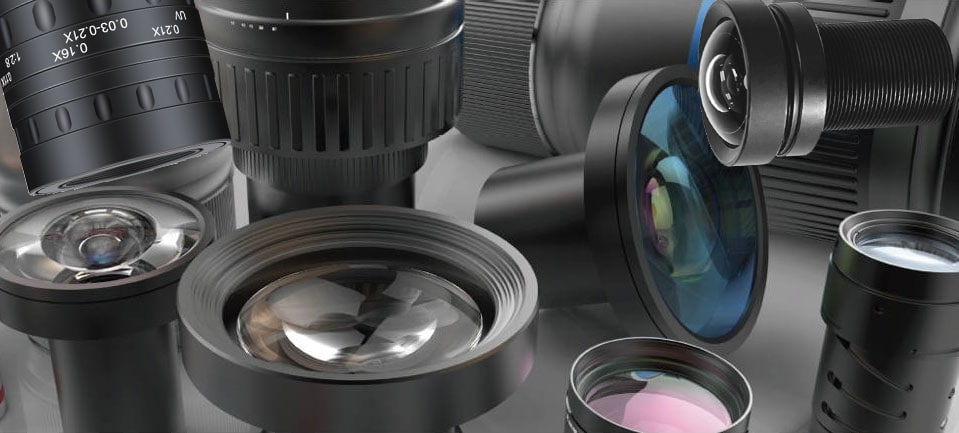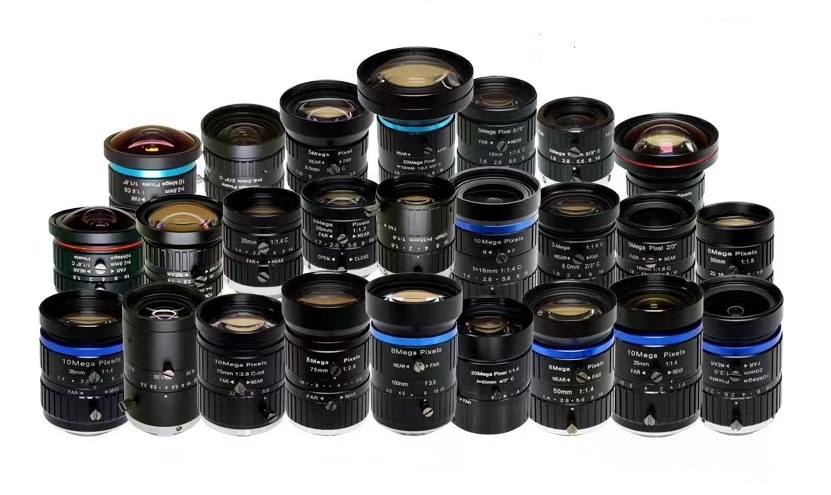An Interview – Technical Image Specialist about Right Lens at SUPERIOR® Optics
Our marketing team conducted interviews with technical experts to help them better understand the technical aspects of our products and services. Our Social Media and Public Relations Manager took time this month to discuss lenses and optics. They discussed Okan’s position, the optics sector in embedded vision and some of their customers’ challenges.
We talk a lot about selecting the “right” lens for an application. Can you explain why this is so important?
Sure. To get the best out of your image sensor, you need the right lens. The lens must be mounted onto the camera, but the entire setup needs to have been fine-tuned to achieve maximum image quality. The image sensor will perform at its best with a well-chosen camera lens. This allows you to capture all the important details without losing any information.
There are a lot of articles and videos about this topic, and it seems like selecting a lens presents difficulty for a lot of people. Why is choosing the right lens such a complex task?
The best lens is determined by the image system, the requirements of the application and the surrounding circumstances. It can be difficult to choose the right lens for your application because there are so many different kinds of lenses available.
We have to consider both the imaging system requirements and the application requirements. All of these factors must be considered together when choosing a lens for best results. Each piece is crucial to the overall picture.
What factors should one consider when choosing a lens?
The size and resolution are important because we need a lens to fit the image sensor. Also, you’ll want to consider the desired field of view and working distance. It is important to consider the aperture size because it will affect the depth of the field and how much light you can capture.
Aberrations and the spectral response can have a significant impact on your image clarity. It’s also important to ensure that you can use the lens with the correct lens mount, so that your scene is properly focused onto the image sensor.
Can you elaborate on these factors a bit more?
Sure! First, we need to look at the size of the sensor. We should ideally illuminate the entire effective pixel region for the generation of images with correct color correction. We must also consider the resolution and pixel size of the sensor.
The lens is the limiter of fine detail resolution as CMOS manufacturing technologies advance. It is not always possible to match the sampling rate of sensors due to optical aberrations, diffraction and manufacturing issues. However, we should aim to find a lens capable of projecting the smallest features from object space onto an area equivalent to two pixels.
What are the object-space factors to consider?
In order to determine the focal length, it is important to consider the working distance and the field of vision. The application settings will determine this. A shorter focal length will increase the field of vision, but a large field of views may introduce distortion to our image.
Aperture size also has an impact on the image quality, as it impacts depth of field and pixel resolution. A wider aperture will allow more light to enter the camera in low-light conditions, which results in a better exposure with less noise.
How can the Optics expert help with this selection process?
SUPERIOR® Optics Experts can be your best partner. They can offer you over 40 years of experience and knowledge of vision solutions. We will provide products that are designed to integrate seamlessly with each other, so you can achieve the desired image quality.

Challenges in Choosing and Sourcing the Right Lens
We take it a step farther, and have the ability to test lenses in our production lines, so that we can be sure the lenses we recommend will meet the highest standards. We can help you improve industrial automation, or integrate machine vision into your medical equipment.
What sort of technical data can people look for that would be useful in lens selection?
Datasheet specifications published by manufacturers are useful, but there’s so much else to consider. To understand how the lens performs in real life, you’ll have to dig deeper into the test results and design data.
The modulation transfer curve and aberration curves, for example, can tell you a lot about the performance of a lens across its entire field-of-view, which is important when using large format sensors.
Don’t forget to consider the environmental reliability. It is important to consider this when setting up a system that will work in extreme conditions. We will provide you with the necessary data and analysis to help you choose the best lens for your requirements. No need to contact multiple vendors abroad.
The events of the past couple of years have really led people to take a hard look at their supply chain. What are some supply chain challenges that might affect a vision project?
Supply chain issues have a major impact on the success or failure of a vision project. As a technical imaging specialist, I can assure you that high-volume lenses require complex testing methods to ensure consistency in quality. Unplanned issues with production yield can lead to delays, and even put the project in danger.
Transporting optical components can also be difficult, and it requires special packaging as well as shipping methods in order to deliver everything without damage and on time.
Lens materials may fluctuate in availability and price. Open communication can help resolve supply-chain issues, which may increase costs and cause delays.
How can supply chain problems be avoided?
For us to deliver high-quality goods to our customers, a smooth supply chain is crucial. SUPERIOR® Optics places a high value on supplier relationships, communication and collaboration. We work with many different suppliers to offer a wide range of optics. Our team regularly communicates with our suppliers to keep up-to-date on the latest product offerings as well as any issues that might arise.
Our suppliers also offer RMA assistance and technical documentation when required. We can avoid supply chain problems by using a structured process, and we can communicate with our customers in an open and honest manner.
What are the challenges your customers see most frequently in terms of price matching?
We want to ensure that our customers get the best possible value for money, without sacrificing reliability or performance. I can understand that some customers have difficulty finding vendors willing to match prices with competitors. This makes it difficult to stick to a budget.
I work with our Sales team as a technical image expert to help customers overcome these challenges. We do this by providing them with clear, transparent pricing information and technical details. We provide guidance and advice to help you balance quality and cost to get the best results.
Sensor technology is constantly evolving, how these changes are affecting lens technology?
It’s true. Image sensor is rapidly evolving, especially with the advances in pixel technologies that are more effective at collecting light than ever before. Sensors with sub-micron-sized pixels are already available. This is good for improving image resolution but puts pressure on lenses to keep up with the latest image sensors.
The Right Lenses are more important to maximize the resolution of these sensors as the pixel sizes get smaller. There is therefore a constant push for innovation in lens technology. This is a very exciting time from my perspective!
How is we keeping up to date with these changes to obtain the intended increase in imaging performance?
SUPERIOR® Optics is always at the forefront of innovative imaging solutions and we are constantly collaborating with other companies to develop new technologies.
As a former academic, I know that optics research and development is expensive. It can discourage suppliers from investing in innovative products. We use feedback from customers to pinpoint research areas and create new products that meet these needs. Our engineers and optics experts keep up to date with the latest industry trends, explore new materials and methods, and push the limits of imaging.
We can prototype quickly new products and test them rigorously to ensure they meet our high standards of performance. We are always excited to introduce new solutions to the market.
The Automotive sector is one important segment of our portfolio. Is the selection of lenses any different for automotive applications than for other applications?
Automotive lenses must withstand high temperatures, magnetic fields, vibrations and other factors. Let’s not forget about waterproofing. Nobody wants a blurry backview camera when it rains. Only lenses that have undergone extensive testing and are certified to meet industry standards can be used in the automotive industry.
Automotive lenses are often required to have unique optical properties. You need, for example, ultra-wide angle lens with low distortion, and clarity, to use surround vision. As the demand for advanced driver assist systems increases, I’m sure automotive lenses will continue to be in the spotlight.

Challenges in Choosing and Sourcing the Right Lens
What can you do when selecting a lens to ensure good image quality across the entire field of view for high resolution applications?
Let me start by saying there’s much more to this than the number of megapixels on a datasheet. Contrast is essential to the resolution of a camera. We expect that the lens will have enough contrast to reveal details at high frequencies. The Right Lenses that have good resolution at the center can degrade quickly on the edges due to dispersion and spherical distortion.
The art of optical design, manufacture, and testing is what makes this possible. Our team works with lens manufacturers to create custom solutions for high-resolution images that include additional aberration corrections or aspherical elements to minimize these effects. Our goal is to achieve the highest possible resolution while maintaining a balance between cost and quality.
Which segment of Optics interests you the most, and what motivates you the most in your work?
As a technical imaging specialist with a passion in optics, I am always drawn to the intricate detail of optical design and images analysis. I am always amazed by the ability to customize and improve optics using careful engineering and design. The end product, and how it will be used, motivates me to work. I enjoy working with medical imaging applications. Previously, I worked on the development endoscopic point of care imaging systems. Medical imaging is one of many examples, and I’m proud to be working at SUPERIOR® Optics.




